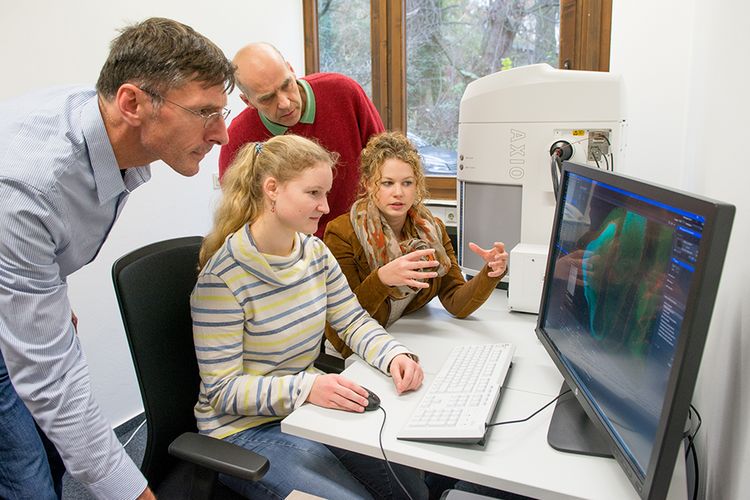Scientists at Oldenburg University can now use a "digitizing robotic microscope" for biological and medical research. Oldenburg University is one of the few German universities where this new type of microscope, which costs approximately 200,000 euros, is in use.
The machine forms part of the equipment at the "Core Facility Microscopy ", an equipment pool which the university's School of Mathematics and Science and School of Medicine and Health Sciences are gradually putting together for cutting-edge research.
The main special feature of the new microscope is that it can record, scan and document extremely fine tissue samples automatically and much faster than a human could. "With this machine what used to take a month can be done in a single night, and in a better quality than we ever had before," Prof. Dr. Henrik Mouritsen, a neurobiologist and one of the microscope's main users, explained. Another advantage is that the samples are automatically digitized, meaning that they can be used years later without any loss in quality.
Professor Mouritsen and his team are using the microscope to study how migratory birds use their magnetic sense and other sensory input for orientation purposes. The microscope is also used on a regular basis by the Sensory Biology of Animals research group led by Prof. Dr. Michael Winklhofer. This group wants to learn more about the magnetic sense of salmon. Neurogeneticist Prof. Dr. Hans Gerd Nothwang's team is studying the effects of deafness on the development and functioning of auditory pathways in mice. His research also benefits from the speed and quality of the microscope's analyses of morphological changes, in other words deviations in the composition, structure or form of organisms.
The robotic microscope is generally available for use by all scientists at the university, including for research projects in human medicine. In this particular area the device can play a key role in advancing medical research and strengthening collaboration between professors at the university hospitals and professors of the natural sciences. The microscope has also been incorporated into the medical training programme, where it is used to introduce students to ultra-modern technologies.



